Anne Umland
on Francis Picabia at the Museum of Modern Art: “Extreme Freedom”
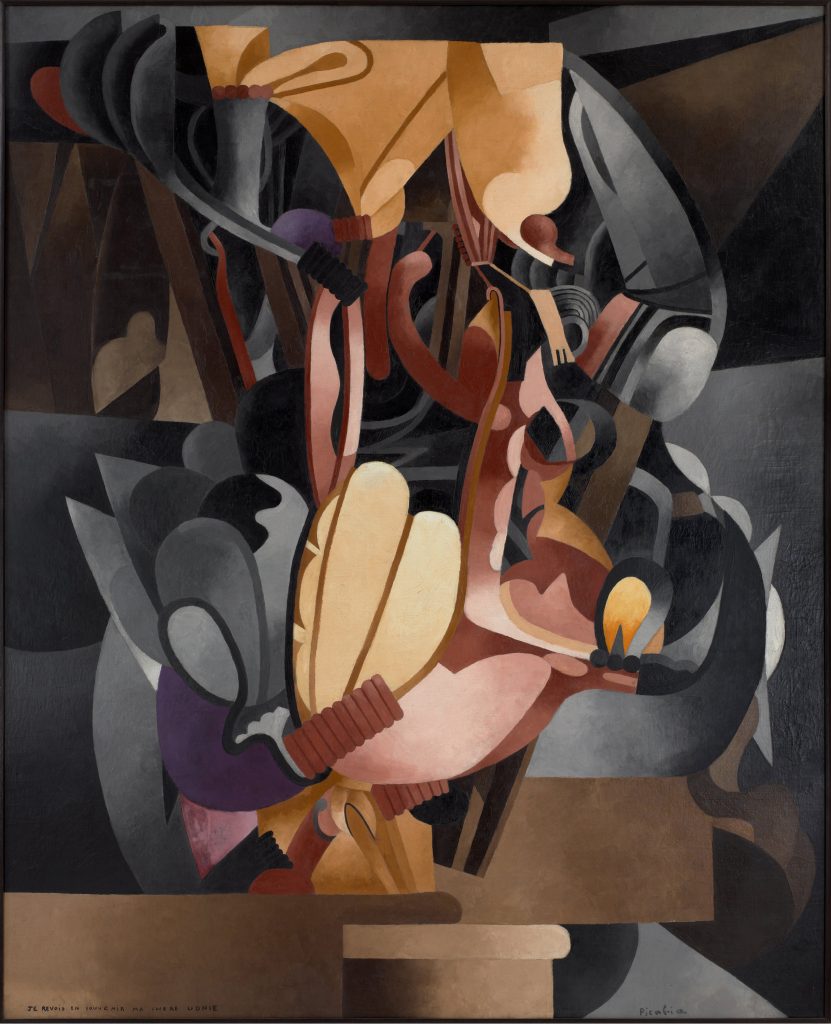
Je revois en souvenir ma chère Udnie (I See Again in Memory My Dear Udnie). 1914. Oil on canvas, 8′ 2 1/2″ x 6′ 6 1/4
The elusive, prolific, and provocative Francis Picabia has been almost lost in the shuffle of art history. A lifelong friend of Marcel Duchamp, Picabia started his career as a successful latecomer to Impressionism, stunned New York with huge abstractions during the 1913 Armory Show, marched at the forefront of the Dada movement, made a movie with Erik Satie, and spent several decades on the Riviera, working in a figurative vein that was as challenging as his earlier work.
Though March 19, 2017, the Museum of Modern Art is presenting the first comprehensive overview of this remarkable artist’s career, which in many ways anticipates the multi-tasking favored by so many contemporary artists. Anne Umland, Blanchette Hooker Rockefeller Curator of Painting and Sculpture at the museum, tells us about his many accomplishments, his flamboyant style, and his importance and relevance to art today.
For more about Picabia, see Vasari21’s “Ripe for Rediscovery” from August 16, 2016.
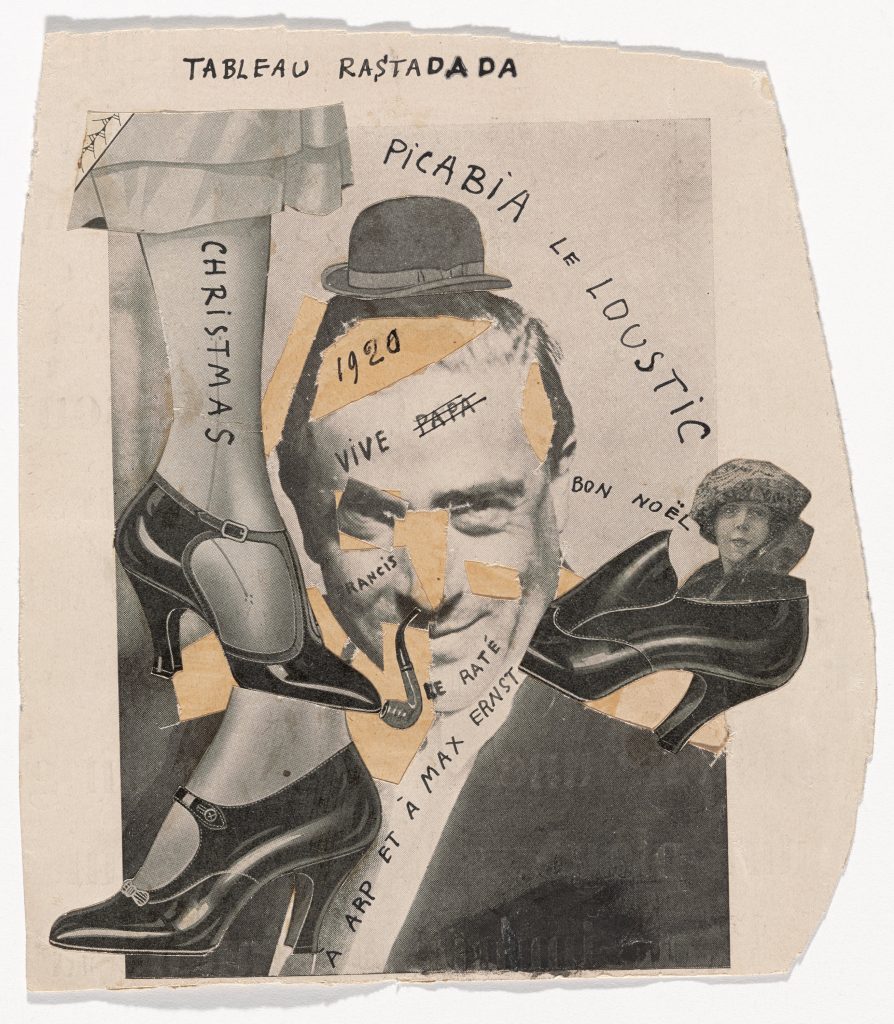
Tableau Rastadada (Rastadada Painting). 1920. Cut‑and‑pasted printed paper on paper with ink, 7 1/2 × 6 3/4″
![Les Amoureux (Après la pluie) (The Lovers [After the Rain]). 1925. Enamel paint and oil on canvas, 45 11/16 x 45 1/4 inches](https://vasari21.com/wp-content/uploads/2016/12/Picabia-The-Lovers-1013x1024.jpg)
Francis Picabia (1879-1953). “Les Amoureux (après la pluie)”. Ripolin sur toile. vers 1924-1925. Paris, musée d’Art moderne.
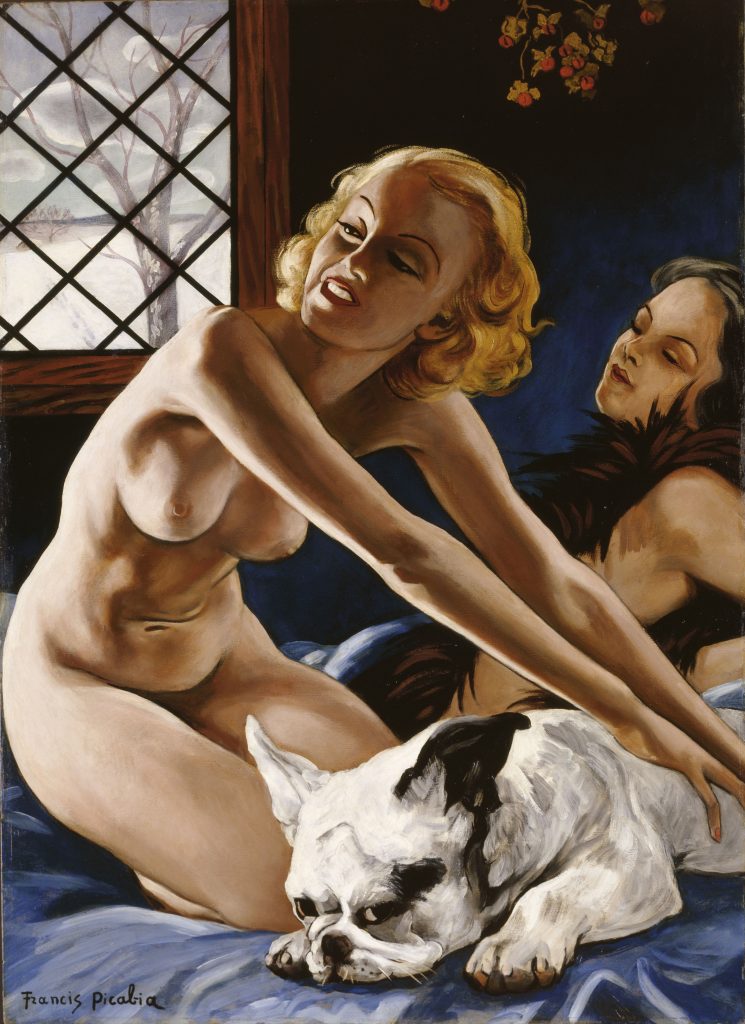
Femmes au bull-dog
Picabia Francis (1879-1953)
Paris, musée national d’Art moderne – Centre Georges Pompidou
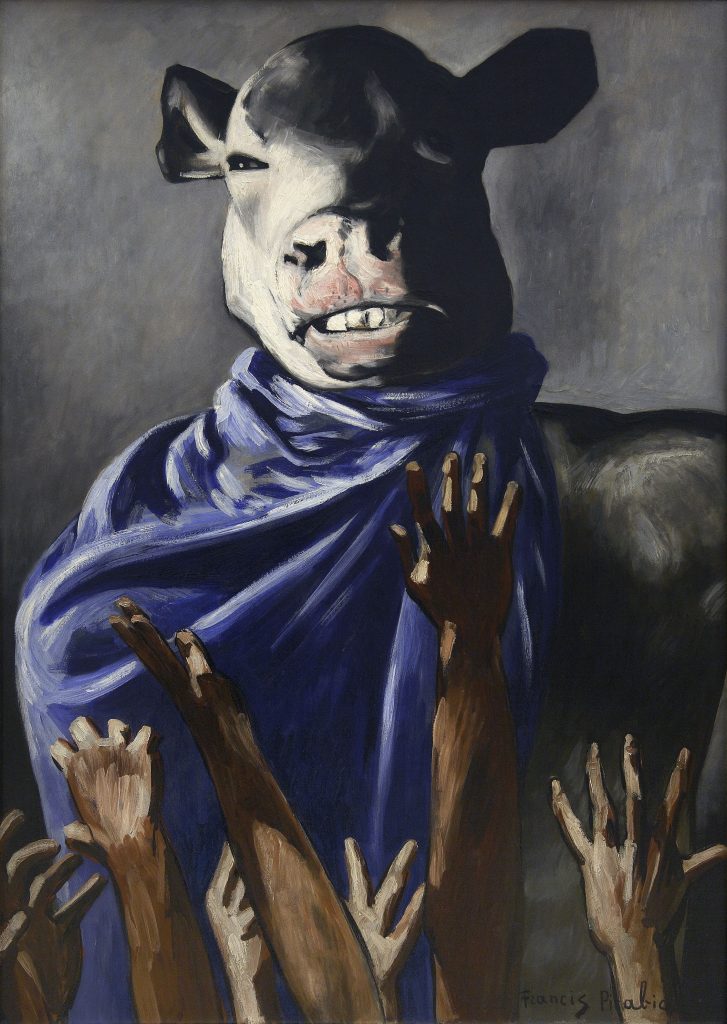
L’adoration du veau
Picabia Francis (1879-1953)
Paris, musée national d’Art moderne – Centre Georges Pompidou
Music credit: “Odyssey” Kevin MacLeod (incompetech.com), Licensed under Creative Commons: By Attribution 3.0 License, http://creativecommons.org/
Photo credit: Photo credit goes here.

Je revois en souvenir ma chère Udnie (I See Again in Memory My Dear Udnie). 1914. Oil on canvas, 8′ 2 1/2″ x 6′ 6 1/4
The elusive, prolific, and provocative Francis Picabia has been almost lost in the shuffle of art history. A lifelong friend of Marcel Duchamp, Picabia started his career as a successful latecomer to Impressionism, stunned New York with huge abstractions during the 1913 Armory Show, marched at the forefront of the Dada movement, made a movie with Erik Satie, and spent several decades on the Riviera, working in a figurative vein that was as challenging as his earlier work.
Though March 19, 2017, the Museum of Modern Art is presenting the first comprehensive overview of this remarkable artist’s career, which in many ways anticipates the multi-tasking favored by so many contemporary artists. Anne Umland, Blanchette Hooker Rockefeller Curator of Painting and Sculpture at the museum, tells us about his many accomplishments, his flamboyant style, and his importance and relevance to art today.
For more about Picabia, see Vasari21’s “Ripe for Rediscovery” from August 16, 2016.

Tableau Rastadada (Rastadada Painting). 1920. Cut‑and‑pasted printed paper on paper with ink, 7 1/2 × 6 3/4″
![Les Amoureux (Après la pluie) (The Lovers [After the Rain]). 1925. Enamel paint and oil on canvas, 45 11/16 x 45 1/4 inches](https://vasari21.com/wp-content/uploads/2016/12/Picabia-The-Lovers-1013x1024.jpg)
Francis Picabia (1879-1953). “Les Amoureux (après la pluie)”. Ripolin sur toile. vers 1924-1925. Paris, musée d’Art moderne.

Femmes au bull-dog
Picabia Francis (1879-1953)
Paris, musée national d’Art moderne – Centre Georges Pompidou

L’adoration du veau
Picabia Francis (1879-1953)
Paris, musée national d’Art moderne – Centre Georges Pompidou
Photo of Anne Umland by Martin Seck
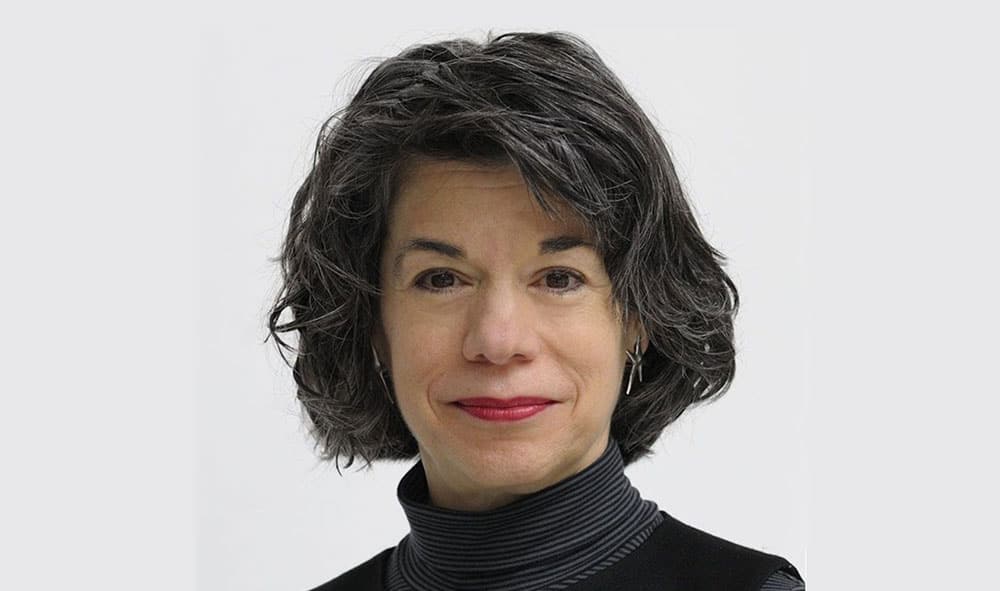
New Year 2017 – the first day – and what a wonderful gift you give us, Ann…Ms. Umland speaking about Picabia and his varied and exciting career. As an art student many years ago, I was mesmerized by his work, and the fact that he worked in a such a wide range of styles – never being pinned down to one way of expressing his creativity…much like Noguchi, an artist, from another time, who never got stuck in a rut of style. I took their multi-faceted careers in creativity as license to explore all means of expressing my own work. Thanks for this gift.
Agree with TJ Mabrey. Thank you so much Ann and Anne for bringing us Picabia.